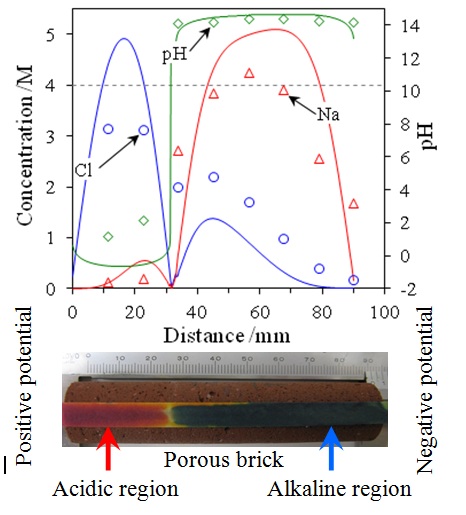Comsol
To interpret any experimental result a good understanding of the underlying physical and chemical processes is required. Often many of these processes occur simultaneously during an experiment, while in addition it is difficult to isolate them experimentally. In these cases a theoretical understanding is indispensable. However, a theoretical treatment often leads to cumbersome mathematical equations, which in general can only be solved for rather simple geometries. To overcome this problem we can use numerical methods for complex geometries to solve a set of mathematical equations. A very common method is the ‘finite element method’. Here a geometry is divided in a large number of small, but still finite, elements. The number of these elements can reach up to millions for three dimensional structures. For each of these elements a solution to the equations is found, which are matched together by their boundary conditions to find an overall solution for the problem at hand. Using this method we are able to simulate the experimental process in detail and vary input parameters that are not accessible experimentally. In our group we use the commercially available Comsol© mutliphysics software package on powerful computer systems.
An example where simulation proved their merit was during the research on the electrokinetic desalination of brick structures. Here an electrical field is applied across a brick to enable more rapid removal of unwanted salt. The application of high electrical field strengths (100 Volt/meter), however, also introduced electrode processes, which resulted in the splitting of water into proton and hydroxyl ions (electrolysis). The result was that harmful acidic and basic fronts moved into the material until they collide. Experimentally it was found that the collision of these fronts almost completely halted the desalination. Using Comsol© we could simulate and thoroughly study the electrochemically processes at the electrodes and ion transport through the brick and consequently explain the experimental results. It was found that the interrelated transport processes of the salt and the proton and hydroxyl ions play a dominant role over the electrode processes.

Electrokinetic desalination of bricks. The graph shows the simulation (solid lines) and experimental (symbols) results for the chloride (Cl), sodium (Na), and the acidity (pH) after desalination. The photo at the bottom shows the experimental results obtained using pH indicator paper.